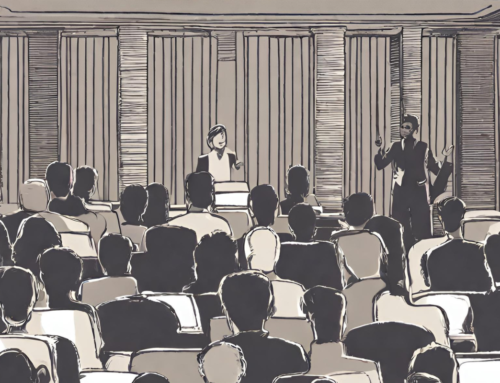The first question you should ask when preparing a presentation is, who’s my audience? But that question requires more than a one-word answer. It’s the beginning of an exploration of the exact circumstances of your audience – who, what, when, where, and why – everything about them you can determine.
Why should you care? After all, isn’t it a matter of integrity to say the same thing to everybody? Yes and no. The message, fundamentally, has to be the same. But the shape that it takes may need to be entirely different. Would you use the same words to describe World War II to a group of six-year-olds as you would to a group of adults?
This time let’s think about the difference between audiences where most of the people know each other and when they don’t. Examples of the former are to be found when speaking at a company annual meeting or awards ceremony, and the latter at a large convention of professionals in the same field.
The impact on how you shape your speech is immediate. If you’ve got some hard-hitting things to say about how bad bosses crimp profits because they decrease worker productivity – you can’t make it personal if bosses and workers are going to be sitting together.
It’s a much different situation if it’s a group of professional managers, say, who don’t predominately know each other. Then, you can get them talking about bad bosses and productivity and they’ll relish the chance to dish.
On a host of levels, you can’t intelligently address an audience until you know whether or not the participants are acquainted.








Leave A Comment